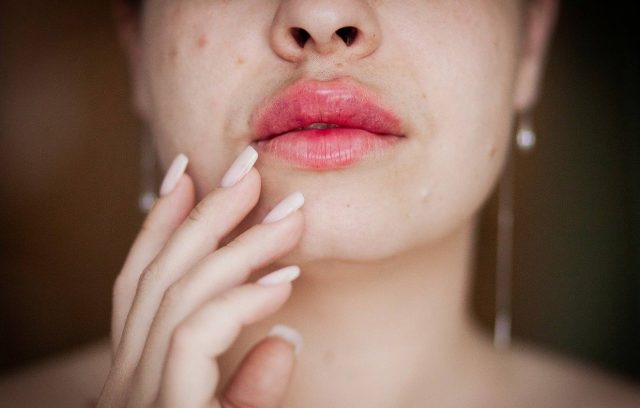As the field of cosmetic dermatology continues to advance, the popularity of facial fillers has soared. These non-surgical treatments offer a way to rejuvenate and enhance one’s appearance without invasive surgery. However, with numerous facial fillers available, it’s essential to understand the differences between them and what to consider before undergoing any treatment. This comprehensive guide will explore six key aspects of facial fillers to help you make informed decisions about your cosmetic procedures.
Types of Facial Fillers
Facial fillers, or dermal or soft tissue fillers, are injectable substances that restore volume, smooth wrinkles, and enhance facial contours. Here are some of the most common types:
- Hyaluronic Acid Fillers (HA Fillers): Hyaluronic acid helps retain moisture and volume. This type, including a Juvederm filler and Restylane, is famous for adding volume to lips, cheeks, and nasolabial folds. They are also used for subtle lip augmentation and under-eye hollows.
- Calcium Hydroxylapatite (CaHA) Fillers: These fillers, like Radiesse, contain calcium microspheres suspended in a gel. They often correct deeper wrinkles and add volume to areas like the cheeks and chin. CaHA fillers stimulate collagen production for long-lasting results.
- Poly-L-lactic Acid (PLLA) and Polymethyl Methacrylate (PMMA) Fillers: Sculptra is a PLLA filler that stimulates collagen growth, gradually improving skin texture and volume. It’s commonly used to treat sagging skin and deep wrinkles. On the other hand, Bellafill is a PMMA filler used for acne scar treatment and facial rejuvenation. It provides long-lasting results as tiny PMMA microspheres stimulate collagen production.
Duration of Results
The longevity of results varies. It often depends on the type of filler used. Generally, hyaluronic acid fillers provide results lasting six months to two years, depending on the specific product and treatment area. Calcium hydroxylapatite fillers can last up to more than a year or longer. Poly-L-lactic acid fillers stimulate collagen production and can provide results that last around two years. PMMA fillers offer long-term effects, and autologous fat transfer can give semi-permanent, permanent results.
Safety Considerations
Facial fillers are generally safe when administered by experienced and qualified healthcare professionals. However, potential side effects and risks include temporary swelling and bruising. These are common side effects after filler injections and typically subside within a few days. While rare, infection can still occur at the injection site. It’s essential to follow post-procedure care instructions. Again, although rare, some individuals may be allergic to certain filler materials. Poor injection technique can lead to uneven results, requiring correction. To minimize risks, choose a board-certified dermatologist or plastic surgeon with extensive experience in facial filler injections.
Pain Management
Most facial fillers contain a local anesthetic or lidocaine to minimize discomfort during the procedure. Additionally, healthcare providers can apply topical numbing creams or ice to reduce pain during the injection. Pain and discomfort are typically mild and temporary. Communicating openly with your healthcare provider about any concerns or pain you may experience during the procedure is essential. They can adjust their techniques and pain management methods to ensure comfort throughout the treatment. Additionally, following post-procedure care instructions, such as avoiding strenuous activities and excessive sun exposure, can contribute to a smoother recovery process and minimize discomfort.
Cost and Maintenance
The cost of facial fillers varies depending on the type of filler used, the treatment area, and the provider’s expertise. Hyaluronic acid fillers are generally more affordable than other options. Remember that facial fillers are not permanent, so ongoing maintenance treatments may be necessary to maintain your desired results. Before committing to facial filler treatments, discussing the expected cost, including potential follow-up treatments, with your healthcare provider is advisable. They can provide you with a clear understanding of the long-term financial commitment required to achieve and maintain the results you desire. Additionally, some providers may offer package deals or discounts for multiple treatments, so it’s worth exploring cost-effective options that align with your budget and goals.
Individualized Treatment Plans
Choosing the suitable filler and treatment plan should be personalized based on your goals and facial anatomy. An experienced healthcare provider will assess your facial structure and discuss your aesthetic objectives before recommending a suitable filler or combination of fillers. This personalized approach ensures natural-looking results that enhance your unique features.
Furthermore, it’s crucial to maintain open communication with your healthcare provider throughout the decision-making process. Express your expectations, concerns, and any specific focus areas, allowing them to tailor the treatment plan to your needs and provide you with a clear understanding of what to expect regarding results and recovery. This collaborative approach ensures you achieve the best possible outcome while maintaining a natural and harmonious appearance.
Facial fillers offer a non-surgical solution for facial rejuvenation and enhancement. Understanding the different types of fillers, their duration of results, safety considerations, pain management options, cost, and the importance of individualized treatment plans is crucial for making informed decisions about cosmetic procedures. Always consult a qualified and experienced healthcare provider to determine the most appropriate filler and treatment plan for your specific needs and desired outcomes.

Speaks from heart, always too passionate and driven by emotions. Spins the words with kindness & sharpness, intriguing your ever-inscrutable minds.




